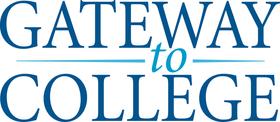Community colleges strive to operate as institutions of higher education that meet the needs of many today. Convenience and flexibility are the watchwords of these schools that host adult students with a wide range of family and professional responsibilities. To achieve those goals, many community colleges across the country are increasing their selection of online and hybrid courses, allowing many busy students to get in at least a portion of their study time from the comfort of home. As the demand for online coursework continues to grow, community colleges grapple with how to provide ultimate flexibility to students without sacrificing instructional quality or completion rates to give students the education options they are asking for.
A Look Back at The Growth of Online Options
Historically, online courses have been increasing at community colleges nationwide since 2005, according to a recent report at Santa Ynez Valley News. The publication cites a report, titled, “Going the Distance: Online Education in the United States, 2011,” which showed that 32 percent more students took an online course during the fall 2011 term. That means more than 6.7 million community college students took advantage of online opportunities during that semester alone.
The number marks a significant increase in online courses from the same semester in 2008 when just 4.6 million students at community colleges took an online course. The 2008 numbers were a 17-percent increase from 2007, suggesting an uptick in the demand for online courses overall. In fact,


















